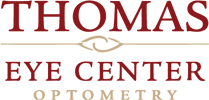Your Eyes Are Begging You to Read This: A Real Guide to Beating Eye Strain at Work
Remember when your mom told you not to sit too close to the TV? Turns out she was onto something. These days, we’re not just close to our screens – we’re practically married to them. The average office worker spends about seven hours a day staring at various digital displays, and our eyes are paying the price.
Let’s talk about what’s really happening to your eyes during those marathon spreadsheet sessions. You’re probably blinking less (yes, that’s a thing), your eyes are working overtime to focus on tiny text, and that artificial blue light is messing with your natural rhythms. It’s no wonder you’re heading home with eyes that feel like they’ve been rubbed with sandpaper.
But before you resign yourself to a lifetime of eye drops and headaches, there are some surprisingly simple fixes that actually work. And no, “get a different job” isn’t one of them.
First up: The 20-20-20 rule. By now most of us have heard about this trick. Every 20 minutes, look at something 20 feet away for 20 seconds. Simple, right? But here’s the trick – you actually have to do it. Set a timer if you need to. When it goes off, look out a window or down the hallway. Give your eyes a micro-vacation from that close-up work. They’ll thank you later.
Next, let’s talk about your screen setup. Your monitor should be about arm’s length away and slightly below eye level. Think of it like a first date – too close is uncomfortable, too far is awkward. You want that sweet spot where your eyes can relax but still see everything clearly.
Here’s something most people get wrong: brightness. Your screen shouldn’t be lighting up the room like a Christmas tree. Match it to your surroundings. If your screen looks like a light source in the room, it’s too bright. If it looks like a dull shadow, it’s too dark. You’re aiming for that Goldilocks zone where it blends naturally with your environment.
Now for the game-changer: proper lighting. That overhead fluorescent nightmare? It’s not doing you any favors. The ideal setup includes indirect, natural light that doesn’t create glare on your screen. If you can’t control the overhead lights, a small desk lamp can help balance things out. And for heaven’s sake, if you’re working after sunset, use your computer’s night mode or blue light filter.
Speaking of which, don’t overlook one of the most effective tools in your arsenal: blue light glasses. These aren’t just another trendy office accessory – they’re backed by countless users who report less eye strain and better sleep after wearing them. While they won’t magically fix poor screen habits, a good pair of blue light glasses can be a game-changer for your daily comfort. Think of them as sunscreen for your eyes in our digital world – sure, you could go without, but why risk it when the solution is so simple?
Here’s a pro tip that nobody talks about: text size matters. Stop squinting at tiny fonts just because that’s how the document opened. Zoom in. Make that text bigger. Your eyes don’t get bonus points for reading microscopic print.
And please, for the love of all things ergonomic, blink. It sounds ridiculous, but we tend to blink less when staring at screens. Try this: every time you check your phone or read an email, make a conscious effort to blink a few times. It’s like a mini spa treatment for your eyes.
Last but not least, consider your overall health. Staying hydrated, eating foods rich in omega-3s and vitamins A and C, and getting enough sleep all contribute to eye health. Your eyes are part of your body, after all.
Remember, these changes don’t have to be dramatic. Start with one or two adjustments and build from there. Your eyes didn’t get strained overnight, and they won’t get better overnight either. But with a few smart tweaks to your daily routine, you can make those end-of-day eye aches a thing of the past.
Mom knows best after all.
